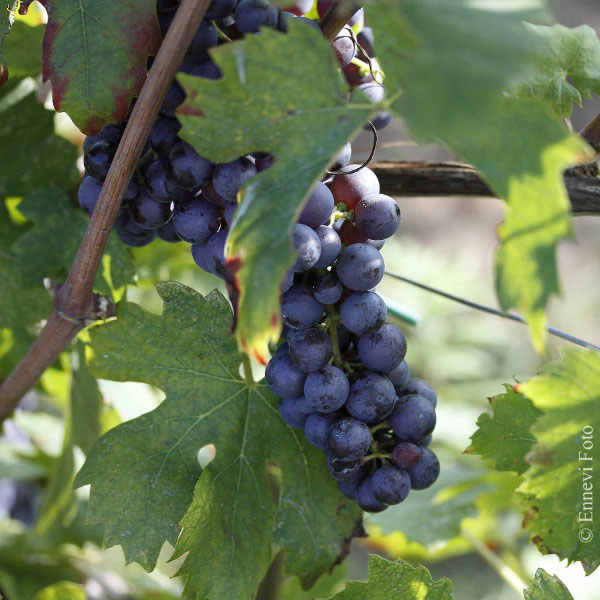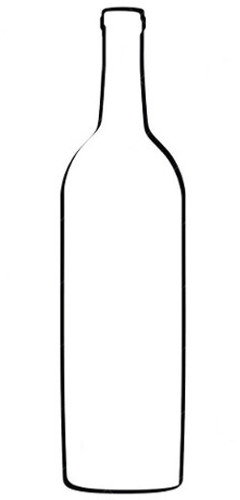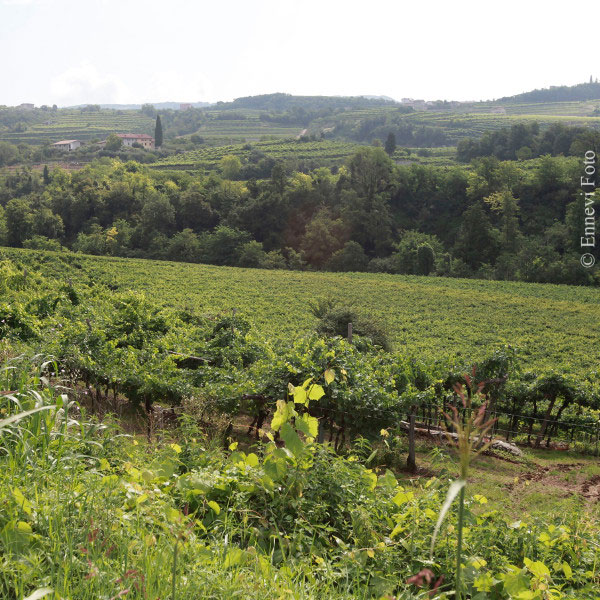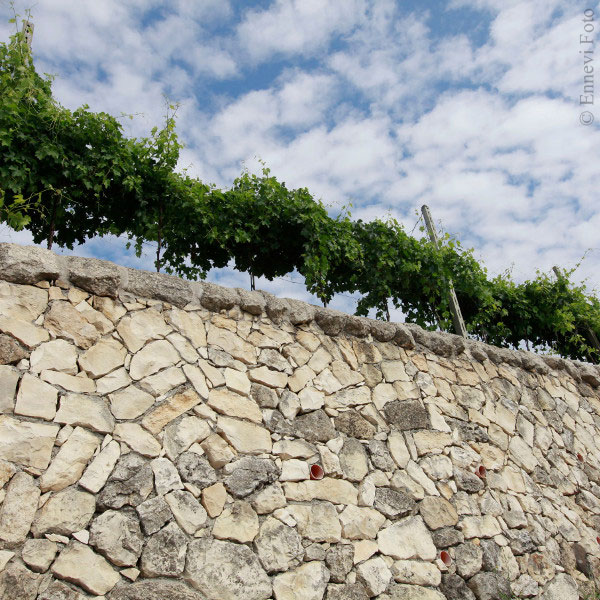



The wines of the Valpolicella zone are the expression not only of the production techniques but especially of the culture of this particular region, and they can boast a long-standing tradition and a well-documented history. Vines have been growing in the Verona area for 40 million years: vines and wine have always been part of the history of this region, from the pre-historical period through that of the Romans and the Middle Ages, up to the modern era and the present day.
A very easy-drinking, food-friendly style characterizes the products of our company, which makes wines in the Valpolicella Classica zone (Amarone, Ripasso and Valpolicella), as well as from the best D.O.C. zones of Verona and Veneto.
The winemaking process begins with soft pressing of the grapes and fermentation at low temperatures; the stabilisation of the white wines prior to bottling takes place in modern stainless steel tanks and we respect the ritual of maturing them slowly in oak barrels, followed by a period of bottle-ageing.

La Serra is the big glass green house adjoining the ancient villa, used to cultivate flowers and plants during the winter. The exposition was generally from east to west, and very often the greenhouses in Valpolicella were built for repairing the rich collection of tropical plants brought from all over the world, from the trips of noble people, or for protecting plants in winter, like citrus fruit and ornamental plants that needed a warmer temperature, constant and temperate.
La Serra is a project of family Begnoni. They propose Veronese wines with strong traditional character, produced from grapes delivered by growers related to the family, based on extended collaboration and friendship. Wines from important appellations, prestigious, but also characterized by an easy drinkability.
In the selection there are several wines including wines out of Verona, still in zones recognized as the most representative of Italy.
Amarone della Valpolicella DOCG Classico
Valpolicella Ripasso DOC Superiore
Valpolicella DOC Classico
Valpolicella DOC
Bardolino Chiaretto DOC Classico
Bardolino Chiaretto DOC
Custoza DOC
Lugana DOC
Pinot Grigio Garda DOC
Soave DOC Classico
Soave DOC
Cabernet delle Venezie IGT
Chardonnay delle Venezie IGT
Merlot Corvina Veneto IGT
Merlot delle Venezie IGT
Pinot Grigio delle Venezie IGT
Bianco VDT
Fresco Rosè VDT
Rosso VDT

Amarone della Valpolicella DOCG Classico
Valpolicella Ripasso DOC Superiore
Valpolicella DOC Classico
Valpolicella DOC
Bardolino DOC Classico
Bardolino DOC
Bardolino Chiaretto DOC Classico
Bardolino Chiaretto DOC
Custoza DOC
Lugana DOC
Pinot Grigio Garda DOC
Soave DOC Classico
Soave DOC
Cabernet delle Venezie IGT
Chardonnay delle Venezie IGT
Merlot Corvina Veneto IGT
Merlot delle Venezie IGT
Pinot Grigio delle Venezie IGT
Bianco VDT
Fresco Rosè VDT
Rosso VDT

Valpolicella, which is known all over the world for its wines, lies to the northwest of Verona and to the east of Lake Garda.
The really great fortune of the Valpolicella zone is constituted by the uniqueness of its rich and varied territory. This in fact forms the basis for the originality of its wines, which is also conditioned to a large degree by the noble characteristics of its various indigenous red grape varieties: Corvina Veronese, Corvinone (or Corvina Veronese grossa), Rondinella and Molinara. These are grapes that ripen relatively late and which are harvested between the end of September and the beginning of October.
A portion of the grapes that have been picked is vinified immediately for the production of Valpolicella and special selections may be used for making Valpolicella Superiore Ripasso. The very best grapes, which are often harvested a little early, are destined to be dried in order to produce Amarone: these bunches are picked exclusively by hand and placed directly in small crates with great care; these crates are then put in special drying areas.

This is the most prestigious wine of the Valpolicella area, which is now well-known in lots of countries all over the world.
What characterizes Amarone is undoubtedly the drying of the grapes prior to vinification: the grapes are laid down in fruttai – special rooms used specifically for the drying process – for a period that varies between 90 and 120 days, during which the grapes dehydrate and, consequently, their sugar level and the potential alcohol level of the wine increase. Vinification normally takes place between January and February, with maceration on the grape skins and low-temperature fermentation even for as long as 30-50 days; then the wine matures for three years in large oak casks and it is aged in the bottle at for a period of at least 12 months.
The resulting wine is very full-bodied. It is characterized by a rather high level of alcohol; it is rounded, intensely flavoured, well-structured and designed to be aged for a long time in the bottle.

Valpolicella is a wine to be drunk young, in order to appreciate its freshness, its bright acidity, its moderate structure, attractive, easy-drinking style and restrained tannins.
Vinification normally takes place in stainless steel. Its lively ruby-red colour, its vibrant appearance and transparency give way to fragrant scents with floral notes and marked suggestions of both sweet and sour cherries, typical fruits of the area.
To make Valpolicella Superiore Ripasso we carry out a stricter selection of the grapes prior to vinification. In this case, we avail ourselves of the ancient technique of “Ripasso”, which consists in re-fermenting a Valpolicella on the grape skins left over from the production of Amarone. This gives the wine greater structure and roundness, an increased level of alcohol and more intense and complex perfumes.
Via Ca' Dedè, 63
San Pietro in Cariano (VR)
Fraz. Pedemonte
Italy
Phone: +39 045 7701074
Email: laserra@laserravini.it